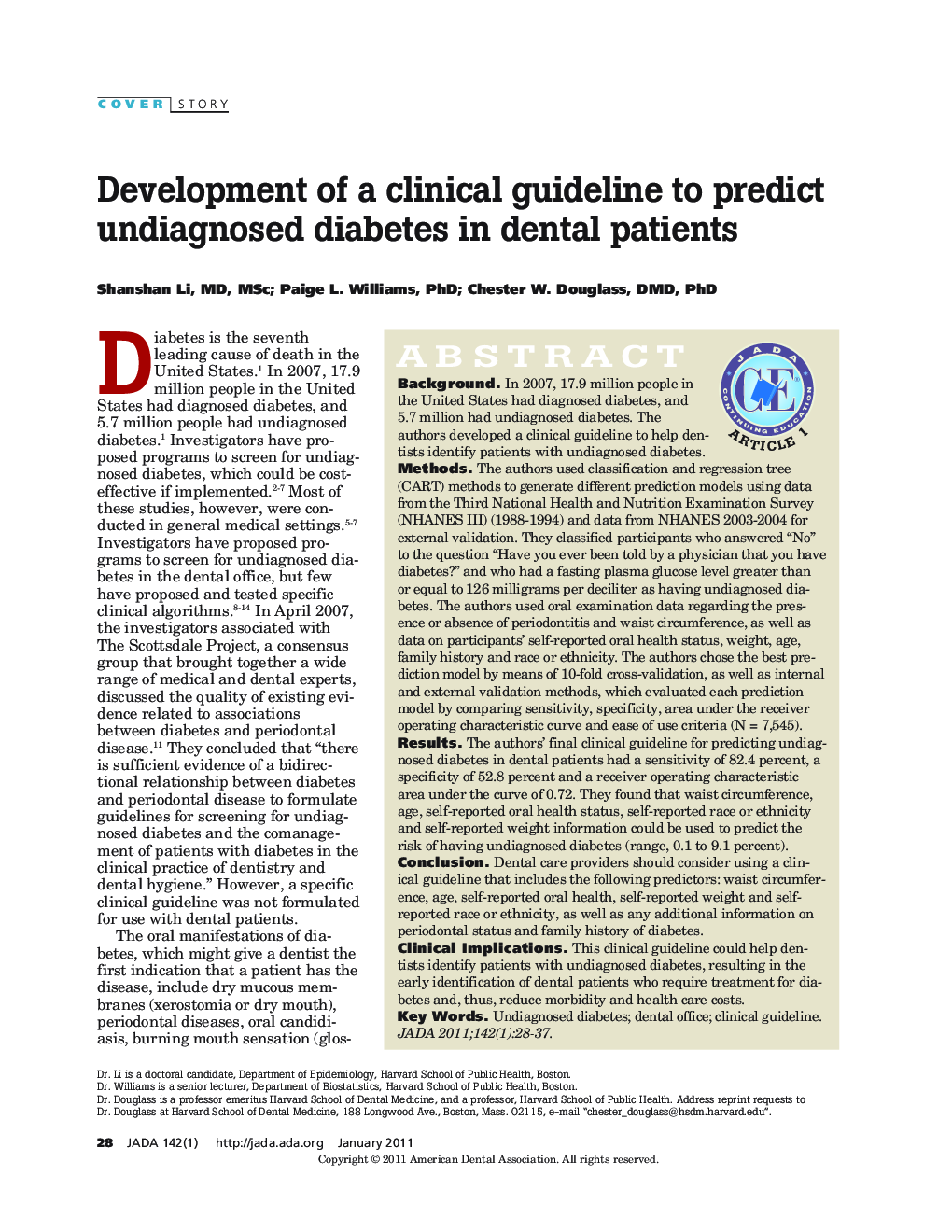| Article ID | Journal | Published Year | Pages | File Type |
|---|---|---|---|---|
| 3138392 | The Journal of the American Dental Association | 2011 | 10 Pages |
ABSTRACTBackgroundIn 2007, 17.9 million people in the United States had diagnosed diabetes, and 5.7 million had undiagnosed diabetes. The authors developed a clinical guideline to help dentists identify patients with undiagnosed diabetes.MethodsThe authors used classification and regression tree (CART) methods to generate different prediction models using data from the Third National Health and Nutrition Examination Survey (NHANES III) (1988–1994) and data from NHANES 2003–2004 for external validation. They classified participants who answered “No” to the question “Have you ever been told by a physician that you have diabetes?” and who had a fasting plasma glucose level greater than or equal to 126 milligrams per deciliter as having undiagnosed diabetes. The authors used oral examination data regarding the presence or absence of periodontitis and waist circumference, as well as data on participants' self-reported oral health status, weight, age, family history and race or ethnicity. The authors chose the best prediction model by means of 10-fold cross-validation, as well as internal and external validation methods, which evaluated each prediction model by comparing sensitivity, specificity, area under the receiver operating characteristic curve and ease of use criteria (N = 7,545).ResultsThe authors' final clinical guideline for predicting undiagnosed diabetes in dental patients had a sensitivity of 82.4 percent, a specificity of 52.8 percent and a receiver operating characteristic area under the curve of 0.72. They found that waist circumference, age, self-reported oral health status, self-reported race or ethnicity and self-reported weight information could be used to predict the risk of having undiagnosed diabetes (range, 0.1 to 9.1 percent).ConclusionDental care providers should consider using a clinical guideline that includes the following predictors: waist circumference, age, self-reported oral health, self-reported weight and self-reported race or ethnicity, as well as any additional information on periodontal status and family history of diabetes.Clinical ImplicationsThis clinical guideline could help dentists identify patients with undiagnosed diabetes, resulting in the early identification of dental patients who require treatment for diabetes and, thus, reduce morbidity and health care costs.
